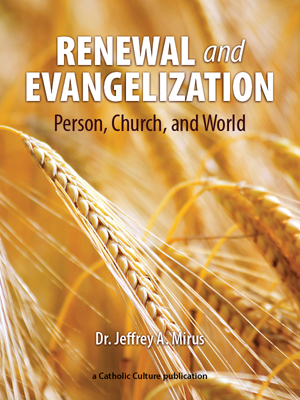Subscribe for free today!
Get newsletters with the latest content, and access to exclusive ebooks and podcast episodes.
Already subscribed? Log in to stop seeing invitations to subscribe.
Pastoral Nature Of The Directory
by Archbishop Francesco Pio Tamburrino
The Directory is a document of a pastoral nature which treats the connection which exists between liturgical celebration and the mystery of Christ and other forms of devotion, both communal and private, generally grouped under the heading of "popular piety". If we address popular devotions directly, it does not mean that we have neglected the liturgy — as the title of the Directory itself indicates. In fact, it is the light of the mystery of Christian worship that sheds light on our treatment of the subject. In truth, this perspective has already been suggested by n. 13 of Sancrosanctum Concilium, which offers basic principles so that we can correctly and fruitfully appreciate popular piety, that is deeply rooted in the tradition of the Church and today practiced by the People of God, in ways that vary according to places and situations.
Guidelines For Pastoral Action
Referring to traditions and different forms of devotion, the Directory recalls the basic theological foundations, and reminds us of directives and suggestions that should guide wise pastoral action. We did not envision drawing up a complete catalogue of the expressions of popular piety in all the countries of the world, but rather we offer the consistent guidelines for application to common situations. In choosing the concrete examples, we have been guided by the relevance and special character of the forms of devotion, in order to show how the criteria are applicable in similar circumstances. It will be the task of the Bishops, with the help of their direct collaborators, to take into account local traditions and forms of popular devotion existing in their dioceses, and to establish norms and give practical guidelines.
First Part: Basic Principles
The Directory consists of two parts, prefaced by an Introduction that, in outline, illustrates the theme, nature, goals, principles, and language of "popular piety". The first part of the Directory provides points of reference taken from history, the Magisterium and theology, to be kept in mind so that one may harmonize popular piety with the liturgy. First of all, the volume sets forth the experience that can be drawn from history and used to confront the problems of our age (chap. 1). Then it re-presents the teachings of the Magisterium, which must guide fruitful pastoral action (chap. 2). Finally, the theological principles are presented which shed light on the link between liturgy and popular piety (chap. 3).
Second Part: Practical Suggestions
The second part is presented as a collection of practical suggestions, without any claim to an exhaustive review of the current usage. The examples are developed according to the framework of the liturgical year (chap. 4). Then we address particular points of popular devotion that include the special veneration, which the Church gives to the Mother of God (chap. 5); devotion to the Angels, Saints and Blesseds (chap. 6); prayers for the dead (chap. 7); pilgrimages and manifestations of devotion in shrines (chap. 8).
In taking this approach, we can address a series of elements which will allow an understanding of the origin and characteristics of different devotions, while we show particular attention to the aspects which comprise the verbal and sign language of popular devotion, such as the texts and prayer formulas, hymns and music, actions, sacred images, times and places.
It is not the intention of the Directory to establish new norms, but to recall the theological-liturgical principles and current discipline, in order to foster in Christian communities a more convinced reception and practice of the fruitful harmony between the liturgy and popular piety as hoped for by Vatican Council II.
To assist in grasping the theological framework of what is expounded at length in the Directory, I will focus upon certain points.
Primacy Of The Liturgy
1. The primacy of the liturgy, that is, the fact that the liturgical celebration is placed as the "summit and source" of every manifestation of Christian devotion. To remember this, one can quote the passage from Sancrosanctum Concilium: "Every liturgical celebration, because it is an action of Christ the Priest and of His Body which is the Church, is a sacred action surpassing all others. No other action of the Church can equal its efficacy by the same title and to the same degree" (n. 7). For this reason, overcoming, the misunderstanding that the liturgy is not "popular", the conciliar renewal has promoted the interior and external participation of the people in the liturgical celebration, favouring modes of direct involvement which, in other times, were left to prayers that were an alternative to the liturgical action.
The decision of the Directory to adopt the liturgical year as the general framework through which to examine the devout practices of the Christian people is not an arbitrary choice, but rather, it is suggested by their historical origin and by the chronological place which they have acquired in the rhythm of the liturgical year. "The faithful should be made conscious of the preeminence of the Liturgy over any other possible form of legitimate Christian prayer. While sacramental actions are necessary to life in Christ, the various forms of popular piety are properly optional . . . The foregoing requires that the formation of priests and of the faithful give preeminence to liturgical prayer and to the liturgical year over any other form of devotion. However, this necessary preeminence is not to be interpreted in exclusive terms, nor in terms of opposition or marginalization" (Directory, n. 11).
Renewal Of Popular Piety
2. Evaluation and renewal of popular piety. The fact that these practices and devotions are considered optional does not mean that they merit little consideration by comparison with what constitutes the real riches of the people of God. Popular piety contains authentic values and can assist the work of conversion in the life of the faithful. The measure of every form of expression of genuine Christian piety is the Gospel and the adoration of the Father "in spirit and truth" (Jn. 4,23): therefore, in certain cases, the evaluation of popular devotions also entails the necessary purification and evangelization.
"Hence, the liturgical renewal willed by the Second Vatican Council must also inspire a correct evaluation and renewal of pious exercises and devotional practices. Popular piety should be permeated by: a biblical spirit, since it is impossible to imagine a Christian prayer without direct or indirect reference to Sacred Scripture; a liturgical spirit if it is to dispose properly for or echo the mysteries celebrated in the liturgical actions; and ecumenical spirit, in consideration of the sensibilities and traditions of other Christians without, however, being restricted by inappropriate inhibitions; an anthropological spirit which both conserves symbols and expressions of importance or significance for a given nation while eschewing senseless archaicisms, and which strives to dialogue in terms redolent with contemporary sensibility. To be successful, such a renewal must be imbued with a pedagogical awareness and realized gradually, always taking into consideration time and particular circumstances" (Directory, n. 12).
Difference From And Harmony With The Liturgy
3. Difference from and harmony with the liturgy. The objective difference between popular devotion and the liturgy must become visible as the expression of devotion. This means the respect for the particular characteristics of the different kinds of places, for example by not combining formulas proper to practices of devotion with liturgical celebrations. In effect, the "language, rhythm, course, and theological emphasis from those of the corresponding liturgical action, must be avoided, while any form of competition with or opposition to the liturgical actions, where such exists, must also be resolved. Thus, precedence must always be given to Sunday, Solemnities, and to the liturgical seasons and days. Since, on the other, pious practices must conserve their proper style, simplicity and language, attempts to impose forms of "liturgical celebration" on them are always to be avoided" (Directory, n. 13).
The importance and current value of the subject that the Directory addresses are recognized because the "world" of popular devotion belongs to the heritage which shapes the tradition of a people, and to their shared way of expressing in a simple but meaningful way their relationship with God, their faith in Jesus, devotion to the Virgin Mary, invocation of the Saints, and prayers for the deceased. In fact, it is necessary to recognize in many forms of popular devotion the revelation of the "religious" soul inherent in human nature. Cardinal Claudio Hummes pointed this out at the Plenary Assembly of the Dicastery in September 2001, speaking of popular devotions "as a sanctioned form of inculturation of the religious element, as the primary and mother tongue of every religion".
This item 4615 digitally provided courtesy of CatholicCulture.org






